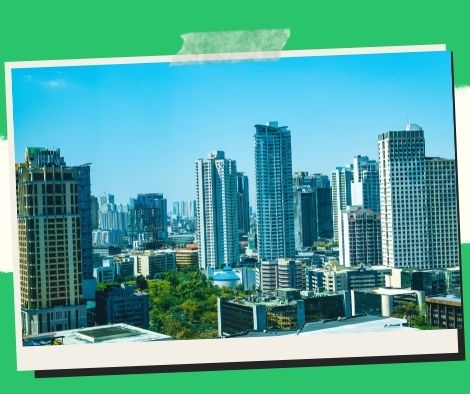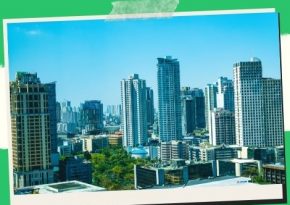
Despite the pandemic, the Marcos administration maintains continued economic growth.
The administration has buckled up and is prepared to implement effective steps to ensure the domestic economy continues recovering from the pandemic’s effects.
The National Economic and Development Authority (NEDA) claimed in a report for the Marcos administration’s first 100 days in office that it had mostly carried out the directive of President Ferdinand Marcos Jr. regarding inter-agency coordination in creating the Philippine Development Plan (PDP) 2023–2028.
In addition to other things, it has organized the Plan Steering Committee, which consists of representatives from the Departments of Finance (DOF), Budget and Management (DBM), Labor and Employment (DOLE), Interior and Local Government (DILG), and Department of National Defense (DND). It has released the PDP planning guidelines. It has also held online training sessions to help mainstream the human-rights-based approach to development planning.
To further expand the share of investments in infrastructure to 5 to 6 percent of gross domestic product, economic managers have reviewed the government’s medium-term budgetary framework for 2023–2028 through the interagency Development Budget Coordination Committee (DBCC) (GDP).
According to the authorities, increased infrastructure spending will increase prospects for economic growth and have long-term economic impacts.
Before being increased by the Duterte administration, which the present administration aims to continue, government infrastructure investment accounted for roughly 3% of GDP.
Because of fiscal measures also promoted by the previous administration, the government has been able to contribute to funding its needs even during the pandemic.
Thus, the current administration wants to maintain the progress made, noting the necessity to reform the Build, Operate, and Transfer (BOT) statute, among other things.
The revisions to the 2022 implementing rules and regulations (IRR) of the Amended BOT Law were adopted by the BOT IRR Committee on September 15 of this year.
In keeping with the government’s desire to carry out more infrastructure projects, the DOF previously stated that the IRR of the BOT Law modification is anticipated to enhance the nation’s investment climate and draw more foreign investors.
According to the NEDA, 17 new infrastructure projects have been added to the Public-Private Partnership (PPP) pipeline since June 2022, bringing the total number of projects in the pipeline to 74. The updated list as of August 31, 2022, shows that the total project cost is approximately PHP2.258 trillion.
According to the NEDA, new projects being carried out by municipal and federal organizations include water supply, public transportation, and road construction.
Light Rail Transit Line 1 Cavite Extension Operation and Maintenance (2024), Cavite-Laguna Expressway (2023), MRT Line 7 (2025), New Manila International Airport (2028), North Luzon Expressway-South Luzon Expressway (NLEX-SLEX) Connector Road Project (2023), and Metro Manila Skyway Stage 3 are a few of the projects whose full operational status is anticipated by 2028. (2023).
The lockdown procedures that were put in place when the pandemic struck in 2022 impacted the building of several of these projects.
Authorities claimed that, notwithstanding this, construction activity had begun as soon as possible and strictly by the health guidelines.
Meanwhile, the Philippine Statistics Authority (PSA), an associated agency of NEDA, has “recommended the move to monochrome PhilIDs (Philippine Identity)” to speed up the daily production of the national identification (ID) from 80,000 to 100,000.
According to NEDA, switching to monochrome PhilIDs will improve photo quality and increase daily printing capacity from 80,000 to 100,000.
According to the report, the BSP plans the contract change related to the switch to monochrome PhilIDs.
In addition to continuing to print real PhilIDs, the PSA will introduce a printable version of ePhilIDs, according to the NEDA.
In a press release on July 26, 2022, PSA stated that it planned to print 50 million PhilID cards by year’s end, of which 30 million would be physical identification cards, and the remaining 20 million would be digital.
The goal of the national ID program is to provide each Filipino with a single ID that will be accepted as legal identification.
This will be used, among other things, to improve the oversight of how the government’s social safety programs are dispersed.
The livestock, poultry, and dairy (LPD) business and the availability of rice, a major crop in the nation, are all under constant review by the NEDA for policy improvements related to food security.
To ensure a sufficient supply of these commodities, the NEDA is promoting the liberalization of foreign investment in rice and corn.
The government aims to be prepared for any eventuality to protect Filipinos, particularly the vulnerable sector, despite difficulties from both the internal and foreign environment.
The government has predicted that the domestic economy will increase by 6.5 to 7.5 percent this year and by 6.5 to 8 percent from 2023 to 2028.
Authorities said that monetary and non-monetary measures are in place to combat the ongoing rise in price increases, even if the elevated inflation rate has negatively impacted the economy’s ability to grow since it impacts people’s purchasing power.
These policies include fuel subsidies for truckers, bus drivers, farmers, and fishermen.
The overnight reverse repurchase (RRP) rate, which the BSP has hiked by a total of 225 basis points this year, is now 4.25 percent.
According to monetary authorities, the impact of the rate increases is anticipated to be mitigated by the domestic economy’s ongoing recovery, which increased by 7.4 percent year-over-year in the second quarter of this year.
The domestic inflation rate, meanwhile, increased to 6.9 percent in September of last year, bringing the year-to-date figure to 5.1 percent, exceeding the government’s goal range of 2-4 percent.
After slowing from a five-month increase to 6.3 percent the previous month, primarily because of increases in food prices, it shifted its direction.
According to monetary officials, inflation will peak in the last quarter of this year and return to within-target levels by the second half of 2023.
Save/Share this story with QR CODE
Disclaimer
This article is for informational purposes only and does not constitute endorsement of any specific technologies or methodologies and financial advice or endorsement of any specific products or services.
📩 Need to get in touch?
📩 Feel free to Contact NextGenDay.com for comments, suggestions, reviews, or anything else.
We appreciate your reading. 😊Simple Ways To Say Thanks & Support Us:
1.) ❤️GIVE A TIP. Send a small donation thru Paypal😊❤️
Your DONATION will be used to fund and maintain NEXTGENDAY.com
Subscribers in the Philippines can make donations to mobile number 0917 906 3081, thru GCash.
3.) 🛒 BUY or SIGN UP to our AFFILIATE PARTNERS.
4.) 👍 Give this news article a THUMBS UP, and Leave a Comment (at Least Five Words).
AFFILIATE PARTNERS

World Class Nutritional Supplements - Buy Highest Quality Products, Purest Most Healthy Ingredients, Direct to your Door! Up to 90% OFF.
Join LiveGood Today - A company created to satisfy the world's most demanding leaders and entrepreneurs, with the best compensation plan today.



 Business Technology, Finance Technology & Information Technology
Business Technology, Finance Technology & Information Technology





